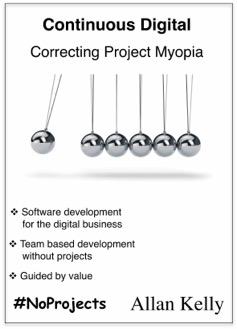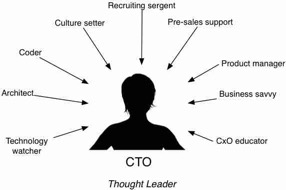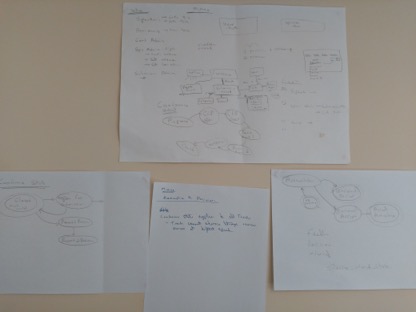
Regular readers will be familiar with my rants against projects and my posts about NoProjects - if not you have a lot of catching up to do: NoProjects Q&A, Beyond #NoProjects, the podcast with Tom Cagley, presentations and lots more. And as many readers will know I’ve been working on a #NoProjects book on Leanpub.
The book will soon reach a point where the content is there, code-complete if you like. (Yes there are some batch process and debugging todo, another story.) The book has reached a point where it has outgrown the #NoProjects moniker and needs a new name. The new name is: Continuous Digital.
Before I explain the name change something special for readers: I’ve set up a discount on LeanPub for Blog readers. Continuous Digital is available for just $5 for this, the last week of April. Use that link or the code AprilBlog.
Now why the name change?
#NoProjects is a great rallying cry and accurately sums up my feeling that in many environments the cost and difficulty of project management actually makes things worse not better. Simply removing it and letting people do work would be a big improvement.
But #NoProjects is also absolute, confrontational and doesn’t actually say what one should do which is a pretty big flaw. An alternative needs a name which isn’t “No”.
#NoProjects has been a necessary step in this evolution, once you relax the mindset that says “everything is, or should be, a project” you see the world differently. This is more than just adopting a product model - although there is a lot of that.
What becomes immediately obvious is that the idea of “Projects” is itself a model - hence why I refer to “the project model”. And the project model is not the only way of managing. Indeed, project management has not always existed, there was a time before “projects” and there will be a time after “projects.” I see evidence all the time that companies are backing away from the project model.
Many of this things project advocates want are entirely possible in an alternative model: goals, estimates, new developments, portfolio management, governance and deadlines to name a few. One of my aims with the book has been to show how these ideas can still work in an alternative model.
The thing I come back to again and again is: successful software lives, it is used and continues to change. Projects, by definition, end. Success is continuous.
(I tried the name BeyondProjects for a while but it didn’t catch on and it got confused with things that go on top of the project model like portfolio management and governance. ProjectLess was another suggestion but “Less” is already overworked as the name of an agile scaling framework and as a CSS preprocessor.)
Now think for a minute, the word “digital” is all around us: “Software is eating the world”, almost all start-ups are software technology based, legacy corporations are rushing to embrace new ways of working and operating.
Yes this is about developing software but it is more. 30 years ago really only software companies developed software as their product. Today every business is, or soon will be, a software based business. Hence the word Digital.
We stand at a point in time where business is changing. The term “digital” tries to capture this change.
As more and more companies rush to embrace digital business it is vital they leave behind the idea that software is ever done.
In business world being done is bad: if you walk into you local Walmart, Tesco or Aldi and the shelves are empty and the manager says “Well we sold everything so we are closing” it is bad.
If Ford and Toyota turn around and say “Everyone who wants a car has one so we are closing” its bad.
Business thrives on change. If a business is digital then the change is going to be digital.
Digital business needs an alternative model to projects. A model that actually matches their business and does not pretend everything will be done one day.
Continuous Digital sets out that a model. Please buy and enjoy the book, its not finished (yet).


